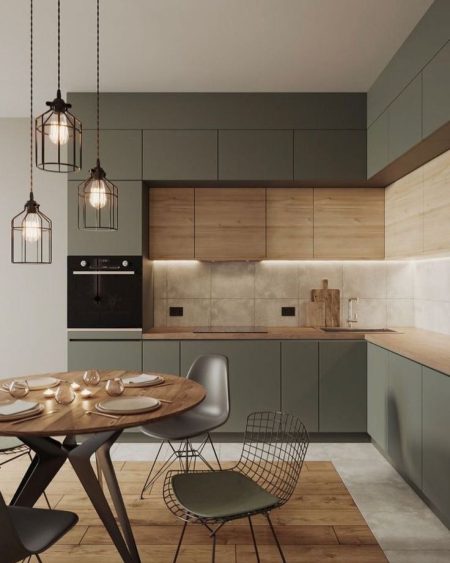Thomas Barwick/Getty Images
Home improvement projects are frequently an expensive cost that can be difficult to manage with savings alone. Fortunately, you can make these expenses more affordable by financing them through a home improvement loan.
Home improvement loans are often unsecured and carry significantly lower rates than credit cards. They also have fixed interest rates, so your payment will remain the same over the life of the loan. That said, there are some factors to consider before applying for one.
What is a home improvement loan?
Home improvement loans are a type of personal loan designed to fund emergency repairs, projects or renovations for your house or property.
Types of home improvement loans
There are three main options when it comes to borrowing money for home projects:
- Unsecured personal loans use your credit score and income to determine your eligibility. They can be used for nearly any expense. And because they are unsecured, you won’t risk your home when you borrow. However, since they are unsecured, they tend to have higher interest rates than the other types of loans mentioned below. Still, you could get an interest rate as low as 6.7 percent if you have a stable source of income and excellent credit.
- A home equity line of credit (HELOC) uses your equity as collateral for the loan — which means you may lose your home if you default. But aside from this risk, they are an extremely flexible and low-cost option for projects that don’t have a set budget.
- A home equity loan also uses your home equity as collateral. Like a personal loan, you borrow a lump sum and pay it back in even installments. But they tend to have lower rates because they are secured.
How home improvement loans work
Whether you opt for an unsecured or secured home improvement loan, they essentially work the same. You use the funds offered by your lender to pay for the permits, contractors, equipment, materials and labor needed to complete the work. This can be done for one big project or piecemeal if you are tackling multiple, smaller projects.
No matter how long it takes to complete the home improvement, you will begin making monthly payments immediately. The exact amount you pay will depend on how much you borrowed and your rate. When selecting a loan, ensure you have the room in your budget to comfortably make monthly payments — and cover any unexpected costs that may crop up during the renovation process.
Where to get a home improvement loan
Most home improvement loans are either going to be unsecured personal loans or a secured loan that uses your home’s equity. This means you will find options offered by online lenders as well as banks and credit unions.
- Online lenders. There are a wide variety of online lenders — and many work with bigger banks to offer low rates. Unsecured personal loans are common, so you should be able to find a lender that works with your credit score and income.
- Banks. Not every bank offers personal loans, but many do have HELOCs or home equity loans. Start with the bank you already use, then compare rates from other national and local banks. In most cases, you won’t need an account to apply.
- Credit unions. Unlike banks, you will need to have a checking or savings account with a credit union to qualify for a home improvement loan. But unlike banks and online lenders, credit unions typically have low rates and less strict lending criteria.
Home improvement loan requirements
Like any loan, lenders consider your credit score, income and debts when determining if you qualify. To get the lowest rates, you will need good credit. In most cases, that means a score of 670 or higher. Sufficient income and a low debt-to-income (DTI) ratio of 36 percent or under also matter. Lenders want to see that you can reasonably cover a monthly payment without straining your budget.
A secured loan — like a HELOC — will also take the value of your property and the amount of equity you have into account. The most equity you have and the more your home is worth, the more likely you are to get a competitive rate.
How to apply for a home improvement loan
Applying for a home improvement loan is pretty much the same as applying for a personal loan. Follow the steps below to ensure you get the best deal for your situation.
- Research loan options and lenders. Since there are both secured and unsecured home improvement loans, you will need to figure out which best suits your needs. Secured loans have lower rates on average, but they come with the risk of losing your property if you default.
- Gather documentation. Lenders will need to see proof of employment, residence and identity. A Social Security number, bank statements, pay stubs and information about your project and property are all necessary to complete an application.
- Submit for prequalification (if available). Prequalification allows you to preview a potential rate without affecting your credit score. If you like what you see, you can submit a full application while also checking rates from lenders that don’t offer prequalification.
- Compare offers. Once you have applied with a few lenders, compare offers. Consider the interest rate, loan term and total cost of the loan by taking into account other factors, such as application fees, origination fees, late fees and prepayment penalties.
When not to get a home improvement loan
A home improvement loan is a good fit if you have a larger project that has multiple costs. A weekend DIY that costs less than $1,000 is better covered by savings or a low-interest credit card.
Many personal loans will have a minimum amount you can borrow. Some lenders allow as little as $1,000. Most, however, will set the minimum amount in the $2,000 to $5,000 range. This is especially true for loans that use your home equity. You should avoid borrowing more than you need, even if your loan doesn’t have a prepayment penalty.
You should also avoid a loan if your budget is already tight. Even loans with low interest rates can be costly, and you need to ensure you will be able to repay to keep your credit score intact. If you already have poor credit, find ways to improve your score before applying for a loan.
The bottom line
Home improvement loans are a key way to fund big projects. While they aren’t good for every homeowner, they can be a solid tool if you know your budget and have good credit.
Start by comparing lenders and looking into what your current bank offers. You may be able to find a good deal — just be prepared to research and provide details on how you will use your loan to upgrade your living spaces.
Read the full article here









